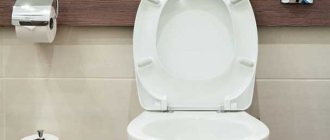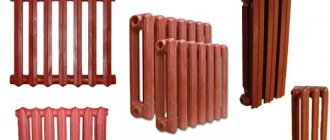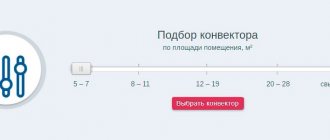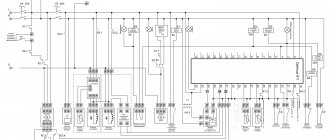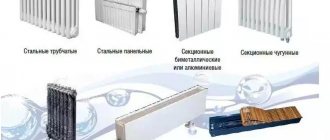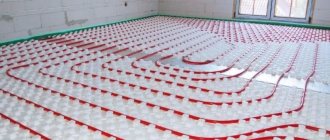Let's say you have selected heating devices by type and design. The next step is to calculate heating radiators for each room of a private house, including determining the thermal power and the number of sections (or size of panels). The simplest option is to use the online calculator of any construction portal. But it is advisable to double-check the calculation results, otherwise you will have to pay for errors later. We offer to calculate the heat transfer of heating batteries manually, in a proven and convenient way.
Initial data for calculations
The calculation of the thermal power of the batteries is carried out for each room separately, depending on the number of external walls, windows and the presence of an entrance door from the street. To correctly calculate the heat transfer rates of heating radiators, answer 3 questions:
- How much heat is needed to heat a living room?
- What air temperature is planned to be maintained in a particular room.
- Average water temperature in the heating system of an apartment or private house.
Note. If a single-pipe wiring is installed in the cottage, you will have to make allowances for cooling of the coolant - add sections to the last radiators.
The answer to the first question - how to calculate the required amount of thermal energy in various ways - is given in a separate manual - calculating the load on the heating system. We present 2 simplified calculation methods: by area and volume of the room.
A common way is to measure the heated area and allocate 100 W of heat per square meter, otherwise - 1 kW per 10 m². We propose to clarify the methodology - take into account the number of light openings and external walls:
- for rooms with 1 window or entrance door and one external wall, leave 100 W of heat per square meter;
- corner room (2 external fences) with 1 window opening - count 120 W/m²;
- the same, 2 light openings – 130 W/m².
Important condition. The calculation gives more or less correct results for ceiling heights of up to 3 m; the building was built in the middle temperate climate. For the northern regions, an increasing coefficient of 1.5...2.0 is used, for the southern regions - a decreasing coefficient of 0.7-0.8.
Distribution of heat losses over the area of a one-story house
When the ceiling height is more than 3 meters (for example, a corridor with stairs in a two-story house), it is more correct to calculate heat consumption by cubic capacity:
- room with 1 window (external door) and a single external wall – 35 W/m³;
- the room is surrounded by other rooms, has no windows, or is located on the sunny side - 35 W/m³;
- corner room with 1 window opening – 40 W/m³;
- the same, with two windows – 45 W/m³.
The second question is easier to answer: a comfortable temperature for living is in the range of 20…23 °C. Heating the air more strongly is uneconomical; heating the air less is cold. The average value for calculations is plus 22 degrees.
The optimal operating mode of the boiler involves heating the coolant to 60-70 °C. The exception is warm or too cold days, when the water temperature has to be reduced or, conversely, increased. The number of such days is small, so the average design temperature of the system is assumed to be +65 °C.
In rooms with high ceilings we calculate heat consumption by volume
Window
Most often, it is these structural elements that become the culprits of leakage from 14 to 30% of heat. For a more accurate calculation, you need to take into account their size and level of insulation. This explains the presence of two calculated coefficients.
Ratio of window area to floor area:
- 10% — 0,8
- 20% — 0,9
- 30% — 1,0
- 40% — 1,1
- 50% — 1.2
The last number is the coefficient.
Type of double glazed windows:
- Three-chamber - 0.85.
- Double-chamber - 1.0.
- Wooden double frames - 1.27 or 1.3.
When considering walls and roofing, the type of material and insulation is taken into account: therefore, there are also two coefficients.
Insulation:
- A brick wall of normal thickness is used as a basis. The coefficient is equal to one.
- For small thicknesses, the coefficient is taken as 1.27.
- Well-insulated structures with a thermal insulation thickness of at least 10 cm: correction number 0.8.
Specified and actual heat transfer of the radiator
The parameters of any heating device are indicated in the technical passport. Typically, manufacturers declare the power of 1 standard section with an interaxle size of 500 mm within the range of 170...200 watts. The characteristics of aluminum and bimetallic radiators are approximately the same.
The trick is that the heat transfer rating cannot be stupidly used to select the number of sections. According to clause 3.5 of GOST 31311-2005, the manufacturer is required to indicate the battery power under the following operating conditions:
- the coolant moves through the radiator from top to bottom (diagonal or side connection);
- temperature difference is 70 degrees;
- the flow rate of water flowing through the device is 360 kg/hour.
Reference. Thermal pressure is the difference between the average temperature of the network water and the room air. Denoted by ΔT, DT or dt, calculated by the formula:
Let’s explain the essence of the problem; to do this, substitute the known values of ΔT = 70 °C and room temperature – plus 20 °C into the formula, and perform the reverse calculation:
- tsupply + treturn = (ΔT + tair) x 2 = (70 + 20) x 2 = 180 °C.
- According to the standards, the calculated difference in coolant temperatures between the supply and return lines should be 20 degrees. This means that the water coming from the boiler needs to be heated to 100 °C, the return water will cool to 80 °C.
- The 100/80 °C operating mode is not available for domestic heating installations; the maximum heating is 80 degrees. In addition, maintaining the specified coolant temperature is not economically profitable (remember, we took the average value of 65 °C).
Conclusion. In real conditions, the battery will give off much less heat than specified in the operating instructions. The reason is the lower value of ΔT - the temperature difference between water and ambient air. According to our initial data, the ΔT indicator is 130 / 2 - 22 = 43 degrees, almost half the declared norm.
Connection
The standard battery kit, as a rule, already includes everything necessary for its installation: dowels, fasteners, adapters, plug and Mayevsky tap.
Methods
There are four ways to connect a steel radiator to the heating system:
- bottom connection is considered the most optimal: the pipes will be practically invisible, and the built-in thermostatic valve will allow you to independently regulate the air temperature level in the room;
- diagonal (cross) connection - the hot water supply pipe is connected on one side of the radiator from the top, and the return pipe is located on the other side from the bottom;
- lateral connection - used to connect radiators to vertical risers of the heating system and is more often used in multi-storey buildings;
- universal connection - the design of the batteries has holes on the top, sides and bottom, which allows them to be used for any connection.
Determining the number of aluminum battery sections
It is not easy to recalculate the parameters of a heating device for specific conditions. The thermal power formula and calculation algorithm used by design engineers are too complex for ordinary homeowners who are ignorant of heating engineering.
We suggest calculating the number of sections of heating radiators using a more accessible method that gives a minimum error:
- Collect the initial data listed in the first section of this publication - find out the amount of heat required for heating, the temperature of the air and coolant.
- Calculate the actual temperature difference DT using the above formula.
- When choosing a specific type of battery, open the technical data sheet and find the heat transfer rate of 1 section at DT = 70 degrees.
- Below is a table of ready-made conversion factors for the heating power of radiator sections. Find the indicator corresponding to the real DT and multiply it by the value of the rated heat transfer - get the power of 1 fin under your operating conditions.
Knowing the real heat flow, it is not difficult to find out the number of battery fins required to heat the room. Divide the required amount of heat by the output of 1 section. For clarity, here is an example calculation:
- Let's take a corner room with two translucent structures (windows) with an area of 15.75 m², ceiling height - 280 cm (shown in a fragment of the drawing). Specific heat consumption for heating is 130 W/m², the total requirement will be 130 x 15.75 = 2048 W.
- We found out the magnitude of the thermal pressure in the previous section, DT = 43 °C.
- We select low aluminum radiators GLOBAL VOX 350 (center distance - 350 mm). According to the product documentation, the heat output of 1 fin is 145 W (DT = 70 °C).
- We find in the table the coefficient corresponding to DT = 43 °C, K = 0.53.
- We multiply the nameplate power by the coefficient and find the real output of 1 section: 0.53 x 145 = 76.85 W.
- We calculate the number of aluminum fins per room: 2048 / 76.85 ≈ 26.65, round up and get 27 pieces.
All that remains is to distribute the sections throughout the room. If the window sizes are the same, we divide 28 in half and place a radiator with 14 fins under each opening. Otherwise, the number of battery sections is selected in proportion to the width of the windows (approximately possible). The heat transfer of bimetallic and cast iron radiators is recalculated in a similar way.
Battery placement diagram - it is better to place devices under windows or near a cold outer wall
Advice. If you own a personal computer, it is easier to use the calculation program of the Italian brand GLOBAL, located on the official website of the manufacturer.
Many well-known companies, including GLOBAL, indicate in the documentation the heat transfer of their devices for different temperature conditions (DT = 60 °C, DT = 50 °C), an example is shown in the table. If your real ΔT = 50 degrees, feel free to use the specified characteristics without any recalculation.
Calculation of the size of a steel radiator
The design of panel devices differs from sectional ones. The batteries are made from stamped steel sheets 1…1.2 mm thick, pre-cut to the required size. To select a radiator of the required power, you need to find out the heat transfer of 1 meter of length of a panel welded from sheets.
We suggest using the simplest method based on technical data from a serious German manufacturer of panel water radiators Kermi. What is the point: stamped batteries are unified, the types of products differ in the number of heating panels and heat exchange fins. The classification of radiators looks like this:
- type 10 – single-panel device without additional ribs;
- type 11 – 1 panel + 1 sheet of corrugated metal;
- type 12 – two panels plus 1 sheet of fins;
- type 20 – battery with 2 heating plates, convection fins are not provided;
- type 22 – double-panel radiator with 2 sheets, increasing the heat exchange area.
Sketches of steel heaters of various types - top view
Note. There are also type 33 heaters (3 panels + 3 fins), but such products are less in demand due to their increased thickness and price. The most popular model is type 22.
So, stamped panel devices of any brand differ only in mounting dimensions. The calculation of heating radiators comes down to choosing the appropriate type, then the length of the battery for a specific room is calculated based on height and heat transfer. The algorithm is as follows:
- Identify the initial data listed at the beginning of the article.
- Select the type and height of the heating device. The most common options are products with a height of 30, 40 and 50 cm, type 22.
- Use the table presented, which shows the heat output q (W/1 m.p.) of Kermi radiators of different types and sizes, depending on operating conditions. Start with the left column - find the appropriate room temperature, then the coolant, then the height and type of battery. In the cell at the intersection of the row and column you will find the power of 1 meter of radiator.
- Divide the amount of energy needed for heating by the value q - you will find out the footage of a radiator of a given height.
- From the catalog, select a water heating device of the appropriate length. If necessary (for example, the battery is too long), divide this size into 2-3 devices.
Calculation example. Let's determine the dimensions of a steel radiator for the same room of 15.75 m²: heat loss - 2048 W, air temperature - 22 degrees, coolant - 65 °C. Let's take standard batteries with a height of 500 mm, type 22. Using the table we find q = 1461 W, find out the total length of the panel 2048 / 1461 = 1.4 m. From the catalog of any manufacturer, select the nearest larger option - a heater 1.5 m long or 2 devices 0.7 m each.
The end of the first table is the heat transfer of 1 m length of Kermi radiators
Advice. Our instructions are 100% correct for Kermi products. When purchasing radiators from another brand (especially Chinese), the panel length should be taken with a margin of 10-15%.
Design
A steel panel radiator can become not only a source of heat, but also a stylish piece of furniture. In addition to the traditional white color, there are radiators on the market in a variety of colors, even with patterns.
Steel panel radiators can be “packed” into decorative boxes - screen and sidewalls, which... Decor for heating devices can be made to order according to an individual design or purchased ready-made from the manufacturer.
New items
Tubular heating radiators, due to the shape of the pipes, can be of a wide variety of designs: both classic options and bold interior experiments are available for them.
For example, a new popular design made of heating pipes has entered the market - bench radiators covered with varnished boards. This bench can be installed in the hallway, kitchen, children's room or winter garden. Its compliance with hygienic standards allows it to be placed in medical institutions.
Heating devices of single-pipe systems
An important feature of the horizontal “Leningrad” is the gradual decrease in temperature in the main line due to the admixture of coolant cooled by the batteries. If 1 ring line serves more than 5 devices, the difference at the beginning and end of the distribution pipe can reach 15 °C. The result is that the latest radiators emit less heat.
Single-pipe closed circuit - all heaters are connected to 1 pipe
To ensure that long-distance batteries transfer the required amount of energy to the room, make the following adjustments when calculating heating power:
- Select the first 4 radiators according to the instructions above.
- Increase the power of the 5th device by 10%.
- Add another 10 percent to the calculated heat transfer of each subsequent battery.
Explanation. The power of the 6th radiator increases by 20%, the seventh by 30, and so on. An expert will tell you in detail in the video why to expand the last batteries of a single-pipe Leningradka:
Finally, a few clarifications
Heating devices can operate in different conditions and be connected according to different schemes. These factors influence the heat transfer of heaters during operation. When determining the power of room radiators, consider several recommendations:
- If the battery is connected to the pipelines using a different bottom circuit, the heating efficiency deteriorates. Add 10% to the calculated power rating of the devices.
- In combined systems (radiator network + warm water floors), convection devices play a supporting role. The main heating load is carried by floor circuits. But the calculated heat transfer of radiators should not be underestimated; if necessary, the batteries should completely replace heated floors.
- Homeowners often cover heaters with decorative screens, even covering them with drywall, leaving convection gaps. In this case, the infrared heat generated by the heated surface of the device is completely lost. Accordingly, the battery power will have to be increased by at least 40%.
- Do not install 1-3 radiator sections, even if the calculation shows this amount. To get a normal heating device, you need to install at least 4 fins.
- Non-freezing liquids are inferior to ordinary water in terms of heat capacity, the difference is approximately 15%. When using antifreeze, increase the heat transfer area of the batteries by 10% (increase the number of radiator sections or panel sizes).
When calculating heating radiators, consider a simple rule: the lower the water temperature in the supply line, the larger the heat exchange surface area needed to heat the rooms. Select boiler equipment correctly and install systems so that you do not have to solve problems by expanding battery sections.
Design overview
A steel panel radiator is a convector, as it promotes the natural circulation of heated and cold air. This is due to the peculiarities of their design - the lower air intake holes take in cold air, and through the holes at the top it comes out already hot. This principle of operation due to the convention allows us to achieve a record efficiency of 75%.
Features of operation
Steel radiators do not heat up as much as cast iron ones, and therefore dust does not burn on them. The hygiene of these devices is ensured by the factory paint spraying method, which also protects them from corrosion.
And what’s important is that you don’t have to paint them; they will retain their appearance for many years. The decorative cladding on panel steel batteries is easily removed, so you can vacuum and wet clean the inside.
Care
Panel heating radiators are made of low-carbon steel, so when the device comes into external contact with water, there is virtually no oxidation or corrosion. Such technical characteristics increase the service life of the device in closed heating systems up to 40 years.

